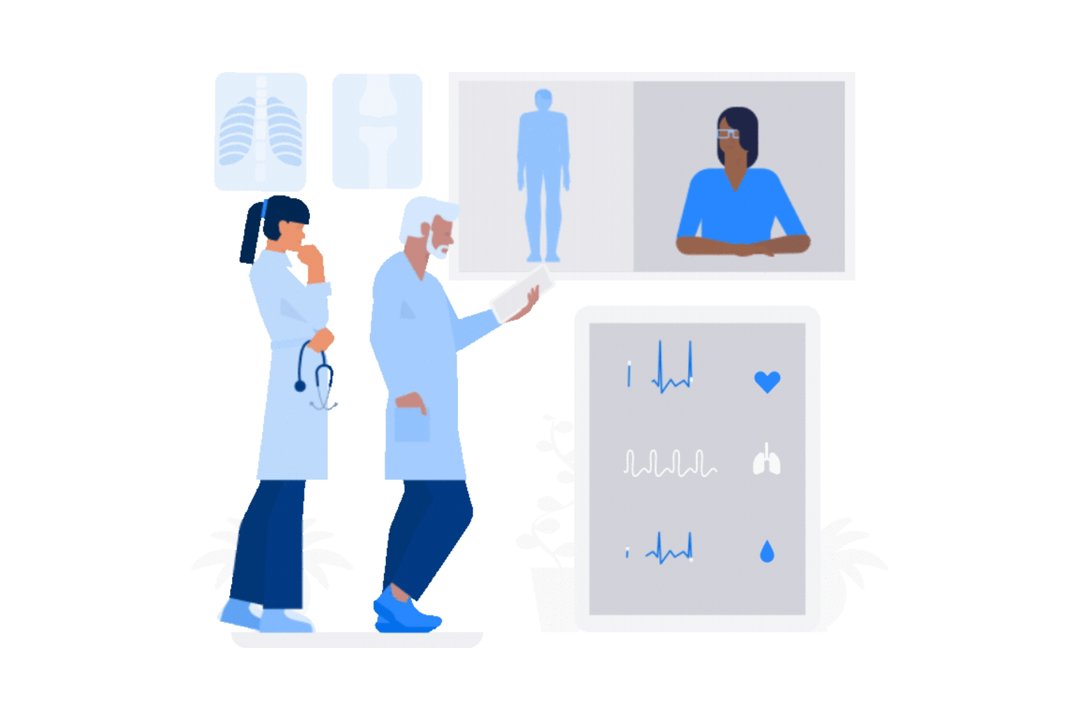
- Patients
Patient Notification and Follow-up of Abnormal Test Results
Notifying patients of abnormal imaging or laboratory results is the crucial first step in the follow up and coordination phase of the diagnostic process.
Inadequate patient notification and follow-up of abnormal test results is a recurring systems failure in ambulatory care settings that can cause patient harm and generate malpractice lawsuits. Notifying patients of abnormal imaging or laboratory results is the crucial first step in the follow up and coordination phase of the diagnostic process. When patient notification does not occur in a timely manner, the opportunity for necessary follow-up care may be lost, jeopardizing patient safety and potentially triggering a negligence claim alleging delayed diagnosis.
MICA’s Risk Team frequently consults with MICA members about test result management and communication processes. For example, many practices have questions about how long they should continue trying to communicate abnormal results when they are unable to get the patient on the phone. In this article, MICA explores how inadequate test result follow-up processes can increase liability exposure and provides tips to improve patient outcomes and reduce medical professional liability risk.
The Risk to Patient and Clinician is Real
Diagnostic error, including delayed diagnosis, is a leading cause of patient harm1 and historically ranks as one of the top reasons physicians are sued. Consider:
-
- Johns Hopkins researchers analyzed diagnostic error-related closed malpractice claims occurring or closed between 1986 and 2015 and concluded that diagnostic errors are the most common, costly, and dangerous of medical mistakes.2
- The Medical Professional Liability Association (“MPLA”) has tracked closed claims through its Data Sharing Project3 for 35 years. P. Divya Parikh, Vice President of Research and Education at MPLA, says diagnostic error has always been “the number-one or number-two area of claims activity.”4
- In a 2014 analysis of 4,700 diagnosis-related closed claims, CRICO (the insurer of Harvard-affiliated entities) found that most diagnostic error cases occurred in ambulatory care, and most involved family or internal medicine.5 Nearly 50% of the cases examined involved errors in the follow up and coordination phase of the diagnostic process, including physician failures to communicate abnormal results to patients.
- Johns Hopkins researchers analyzed diagnostic error-related closed malpractice claims occurring or closed between 1986 and 2015 and concluded that diagnostic errors are the most common, costly, and dangerous of medical mistakes.2
Both of the following scenarios are examples of situations where the clinician’s failure to communicate abnormal diagnostic test results led to a malpractice claim6:
-
- A 64-year-old patient with a complex medical history complained of shortness of breath. The primary care physician ordered a chest CT. The radiology report identified an incidental lung nodule and recommended frequent monitoring. The patient never received notification of the results or the need for follow-up from the PCP. Eighteen months later, the patient died of lung cancer.
- The physician’s biller was reviewing the patient’s health record in preparation to send the account to collections. The biller discovered abnormal colposcopy results that had not been communicated to the patient.
- A 64-year-old patient with a complex medical history complained of shortness of breath. The primary care physician ordered a chest CT. The radiology report identified an incidental lung nodule and recommended frequent monitoring. The patient never received notification of the results or the need for follow-up from the PCP. Eighteen months later, the patient died of lung cancer.
Cases like these can be hard to defend if jurors believe the errors were easily avoidable and only occurred because the defendant health care professional was inattentive, careless, or “dropped the ball.” This, combined with the potential for a high damage award if the patient suffered a catastrophic outcome such as death, makes these cases risky to take to trial. Many settle.
A Longstanding Problem Not Cured by Electronic Health Records
Failures in test result communication are not new. For more than 20 years, researchers have studied their causes and frequency, and patient safety advocates and policymakers have prioritized the search for solutions.7 Still, the problem has not been cured despite the automation advantages of electronic medical records and the Information Blocking Rule’s prohibition against delaying patients’ electronic access to test results.8
Consider:
-
- Although electronic records offer automation, they don’t eliminate communication gaps.
- While practices with portals should heed the Information Blocking Rule’s prohibition against delaying patient access to electronic test results, remember that not all patients use the portal.
- Even when patients access diagnostic results via the portal, they may not understand the results or their significance. Also, after the results are communicated, clinicians and patients still must work together to formulate a treatment plan. Clinician communication and monitoring is essential to close the loop on the diagnostic process and optimize patient outcomes.
- Although electronic records offer automation, they don’t eliminate communication gaps.
Strategies for Effective Communication of Test Results – Pre-Results Stage
In the “pre-results” phase, before a patient obtains the recommended diagnostic test, physicians, advanced practice providers (APPs), and their practices can utilize a variety of steps to ensure that if abnormal results are received, they will be timely and effectively communicated so a treatment plan can be rapidly formulated. MICA’s Risk Team offers these recommendations related to maintaining current contact information:
-
- Develop a process whereby you confirm correct contact information every time you interact with the patient, including during appointment scheduling calls and in-office encounters. Train staff and clinicians to execute.
- Consider asking the patient to supply an emergency contact who can receive test results and other protected health information in case the practice loses contact with the patient.
- Develop a process whereby you confirm correct contact information every time you interact with the patient, including during appointment scheduling calls and in-office encounters. Train staff and clinicians to execute.
In addition, enlisting the patient’s participation in the diagnostic process can pay dividends in the long run. Consider a situation where the clinician’s test result management procedures fail, and the patient is not contacted about abnormal results. If the physician or APP took the time to educate the patient about the tests, their significance, and when to expect results, and provide a caution that no news is NOT good news, the patient may contact the practice seeking results. This can provide an important backup that protects the patient and the clinician.
During any encounter where you recommend a diagnostic test, use understandable, layperson’s language to:
-
- Explain how the test is conducted, the test’s purpose, and how it relates to the patient’s complaints;
- Tell the patient when the results will be available and the method the practice will use to convey the results to the patient;
- Re-confirm current contact information and emphasize to the patient that he or she could suffer harm and their condition could worsen if the practice is not able to reach them to relay any abnormal results;
- Summarize generally what next steps will look like if the results are abnormal;
- Emphasize to the patient that no news is not good news. Direct the patient to call the practice if they have not received results within a specified time; and
- Provide clear instructions about follow-up appointments.
- Explain how the test is conducted, the test’s purpose, and how it relates to the patient’s complaints;
When results communication failures could be catastrophic (e.g., cancer diagnoses), consider developing a written handout for patients to take home that reminds patients when test results will be available, emphasizes that follow-up of abnormal results is essential to avoid life-threatening injury, and tells patients to call the practice if results are not received in a specific time. Keep a copy of this form in the patient’s chart to document what was provided to the patient.
Documenting all education and engagement information provided to the patient is critical. It may aid in the defense of a future delayed diagnosis case.
Managing the Results Notification Process When Communication Attempts Fail
Sometimes a clinician has current contact information but is unable to reach the patient to discuss abnormal results and schedule follow-up appointments or consultations. At this point, many practices call MICA’s Risk Consultants seeking guidance on how to proceed. There is no black and white answer regarding how many times a practice should try and what methods a practice should use to contact the patient.
In legal terms, the standard of care is what a reasonable and prudent physician of the same specialty would do in similar circumstances. Therefore, the number and method of attempts to reach the patient or patient’s representative should be reasonable according to the situation. When deciding what number of attempts is appropriate, consider the severity of the patient’s condition, the test result, the potential impact on the patient’s health if treatment is not initiated immediately, and patient-specific factors. Consider the following:
-
- Dangerously high or low laboratory test results, including Prothrombin Time (PT), International Normalized Ratio (INR), Activated Partial Thromboplastin Time (aPTT), may require the immediacy of repeated telephone calls or even encrypted text messages.
- If the practice has historically had difficulty reaching the patient by phone, consider using two or three alternative methods besides phone calls including email, portal messages, letter by regular U.S. mail, overnight or courier delivered letter, or letter via certified U.S. mail.
- When attempting to schedule a follow-up appointment to discuss an aggressive and/or potentially terminal pathology result and next steps, the practice may need to use multiple contact methods and continue trying for months.
- If the practice has information about physicians or APPs in other specialties that are treating the patient, consider working through them to try to contact the patient.
- Thorough documentation of each contact attempt, made at the time of the attempt, is crucial to strengthen the defense of any later board complaint or medical negligence lawsuit.
- Dangerously high or low laboratory test results, including Prothrombin Time (PT), International Normalized Ratio (INR), Activated Partial Thromboplastin Time (aPTT), may require the immediacy of repeated telephone calls or even encrypted text messages.
[1] Gandhi, T.K., & Singh, H. (2020, May). Reducing the risk of diagnostic error in the COVID-19 era. Journal of Hospital Medicine, 15(6), 363-366. https://www.journalofhospitalmedicine.com/jhospmed/article/222266/hospital-medicine/reducing-risk-diagnostic-error-covid-19-era. In 2020, ECRI Institute listed missed/delayed diagnoses as the top patient safety concern. https://www.beckershospitalreview.com/patient-safety-outcomes/top-10-patient-safety-concerns-of-2020-from-ecri-institute.html
[2] Saber Tehrani A.S., Lee H., Mathews S.C., Shore, A., Makary, M.A., Pronovost, P.J., & Newman-Toker, D.E. (2013), 25-Year summary of US malpractice claims for diagnostic errors 1986–2010: an analysis from the National Practitioner Data Bank. BMJ Quality & Safety, 22(8),672-680. http://dx.doi.org/10.1136/bmjqs-2012-001550; Newman-Toker, D.E., Schaffer, A.C., Yu-Moe, C.W., Nassery, N., Saber Tehrani, A.S., Clemens, G.D., Wang, Z., Zhu, Y., Fanai, M., & Siegal, D. (2019). Serious misdiagnosis-related harms in malpractice claims: The “big three” – vascular events, infections, and cancers." Diagnosis, 6(3), 227-240. https://doi.org/10.1515/dx-2019-0019.
[3] The Data Sharing Project is the largest independent ongoing medical professional liability claims database in the nation, compiling information from participating medical professional liability insurance carriers, such as MICA.
[4] Physicians Insurance. The data story: Diagnostic errors account for top liability claims and lawsuits. Physicians Report, Spring 2021. https://www.phyins.com/magazine/data-story-diagnostic-errors-account-top-liability-claims-and-lawsuits
[5] CRICO Strategies (2014). Annual benchmarking report: Malpractice risks in the diagnostic process. https://www.rmf.harvard.edu/Malpractice-Data/Annual-Benchmark-Reports/Risks-in-the-Diagnostic-Process. CRICO insures all Harvard medical institutions and their affiliates.
[6] Both examples are taken from CRICO’s closed claims database. Candello Solutions by
CRICO (December 2022). Illuminating Risks Failure of patient follow-up systems.
[7] Moore C.R. (August 2012). No news may not be good news. PSNet. Rockville (MD): Agency for Healthcare Research and Quality, US Department of Health and Human Services.
[8] Generally, the Information Blocking Rule prohibits any practice by a health care provider that is likely to interfere with the access, exchange, or use of electronic health information (EHI), except as required by law or specified in an information blocking exception. https://www.healthit.gov/topic/information-blocking
Federal law defines information blocking. See 45 CFR § 171.103. Interference may include delaying the release of electronic test results to patients.
